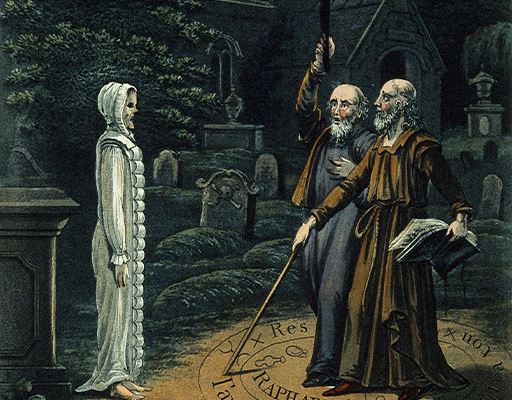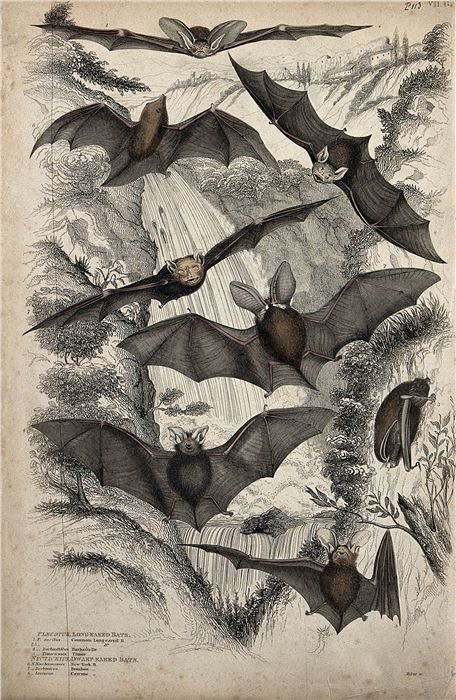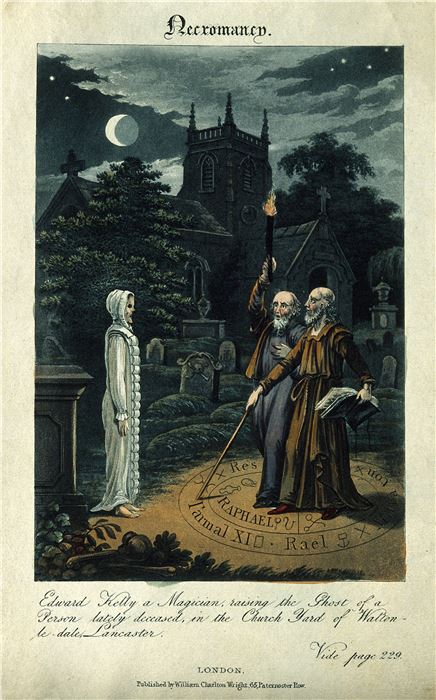Halloween with the Wellcome Collection
A haunting tour of the visual works from the Wellcome Collection exploring Halloween鈥檚 imagery through art, history, and symbolism
Benjamin Blake Evemy / 黑料不打烊
31 Oct, 2025

Autumn in London: the summer has ended, the skies have resumed their common grey hue, the chill has returned to the air, and the verdant foliage of the sycamores, oaks, and planes has turned to warmer shades of browns, yellows, and reds. Ochre leaves spiral to the sodden grounds of Victorian cemeteries, pile against wrought-iron railings, are snatched away by the autumnal wind and skitter up darkened streets, past low-lit public houses, and the cold stone facades of Greek-pillared museums and galleries. One such institution, situated on Euston Road, a stone’s throw from the St. Pancras New Church, is the Wellcome Collection. Home to the paintings peculiarly educational, alongside a vast catalogue of archival images bestowed upon the public to use at their will, the Wellcome Collection serves as an endless source of inspiration for those wishing to invoke the restless spirit of All Hallows’ Eve.
Big black cats howl as naked witches ascend into the night over the city. Color process print after a lithograph by T.A. Steinlen. Wellcome Collection.
Witches and their familiars, so quintessentially Halloweenish. High above a sleeping city, a coven of derobed witches take to the nighttime air in delirious hysteria, writhing raptured upon their broomsticks as a series of black cats snarl and hiss their feral approval with arched spines. The look of utter mirth on the countenance of the enchantress found in the foreground as she throws an arm skyward, her pale body contorting and raven hair flowing, is a joy to behold for those viewers under her irresistible spell. Swiss-born French Art Nouveau artist, Théophile Steinlen, had a penchant for cats himself, creating numerous pieces depicting the domesticated animal, including what is perhaps the most famous image of a feline, the La Tournée du Chat Noir de Rodolphe Salis poster.
Eight different specimen of bats shown with spread and folded wings. Colored etching by S. Milne. Wellcome Collection.
Late October is the time to bid a long goodnight to our winged-mammal friends, as bats begin to enter their hibernation. Although the above colored etching was originally created to be didactic, it holds indisputable aesthetical value, with seven of the eight bats having taken to leathery wing against a backdrop of a cascading waterfall in what, judging by the distant castle and cypress-bordered houses, appears to be the hills of Tuscany.
Edward Kelley: he conjures up a ghost in a graveyard. Colored aquatint. Wellcome Collection.
Although more closely resembling a scene from a Dennis Wheatley novel than historical fact, the above illustration is, in reality, from a non-fictional source. Edward Kelley was an English Renaissance scryer and occultist, who befriended the infamous Dr. John Dee – court astronomer and ‘philosopher’ to Elizabeth I. It is almost certainly Dee who is accompanying Kelley as they stand inside the magick circle, raising a spirit from beyond the veil that separates the living and the dead. A waning crescent moon hangs between a break in the clouds in the nocturnal sky, above the churchyard of Walton-le-Dale, as the two occultists conduct their unholy work. It is a curious tale, and one that has naturally shape-shifted over the centuries. In the original telling of the tale, it was not Dee that was accompanying Kelley, but one Peter Waring – another practitioner of the darker arts. The two had dragged a poor servant with them in order to find a freshly buried corpse of which to exhume in order, by means of necromancy, to elicit an evil spirit to speak through regarding the fate of a young noble gentleman.
A skull, a skeleton, candles and other symbols of mortality. Engraving attributed to G. Altzenbach, [16--]. Wellcome Collection.
As Halloween inevitably approaches, it is not uncommon for one to spy skulls set upon the polished wood of pub counters, and skeletons hanging from shadow-cast doorways. But what seems like mere superficial decoration, actually holds the most poignant of symbolism, for it is the time of year that the dearly departed return, that they are honored and remembered. And as the old proverb goes, hidden in forgotten corners of cemeteries, carved into crumbling mausoleum stone: “WE HAVE BEEN LIKE YOU – AND YOU SHALL BE LIKE US”. The above 15th-century engraving serves as a memento mori of this ilk. A skull, a skeleton, an hourglass trickling sand, a sundial, candles that will inevitably burn themselves out, all reminders that one day each and every one of us mortals will find ourselves on the other side of this bittersweet thing that we call life…
The Wellcome Collection is a museum and library that is free for public use, believing that the past, present, and future of health should be of benefit to all.
For more on auctions, exhibitions, and current trends, visit our Magazine Page

 ARTISTS
ARTISTS










![A skull, a skeleton, candles and other symbols of mortality. Engraving attributed to G. Altzenbach, [16--]. Wellcome Collection.](https://media.mutualart.com/Images/Articles/10_2025/30/3bb6a2b0-9d55-4bd6-ac01-f02f611b3684-A skull, a skeleton....Jpeg)

